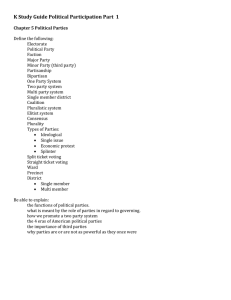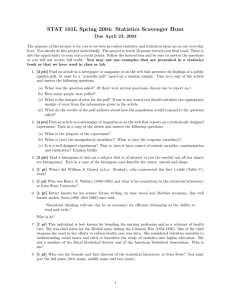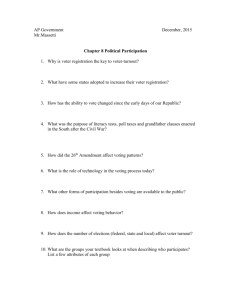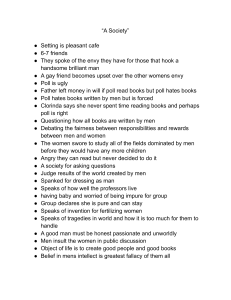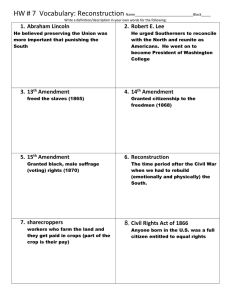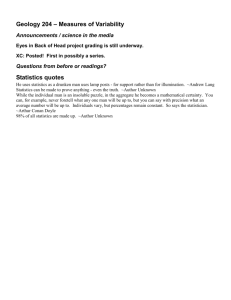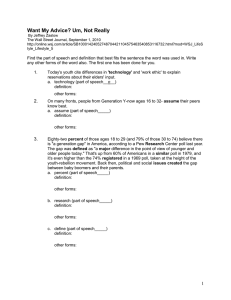Unit 6
advertisement
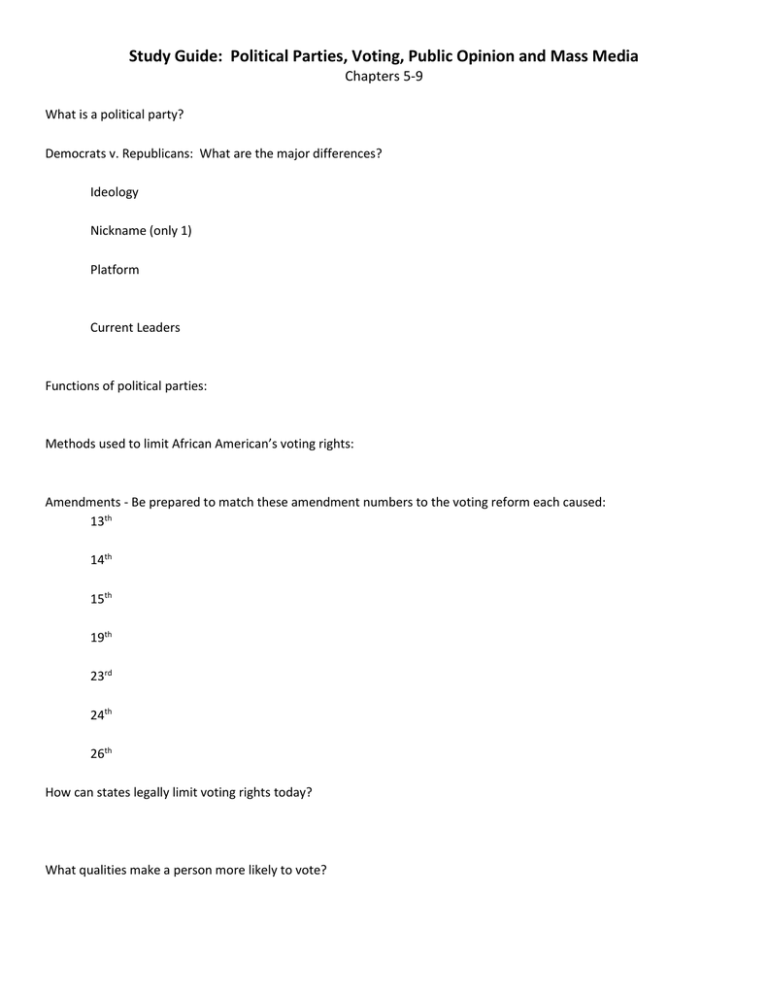
Study Guide: Political Parties, Voting, Public Opinion and Mass Media Chapters 5-9 What is a political party? Democrats v. Republicans: What are the major differences? Ideology Nickname (only 1) Platform Current Leaders Functions of political parties: Methods used to limit African American’s voting rights: Amendments - Be prepared to match these amendment numbers to the voting reform each caused: 13th 14th 15th 19th 23rd 24th 26th How can states legally limit voting rights today? What qualities make a person more likely to vote? Three important functions of Minor Parties: Factors that determine our opinions: List & explain briefly Vocabulary: Public Opinion Margin for Error Interest Group Grass roots Propaganda Bandwagon Effect Transfer Plain Folk Card-Stacking Glittering Generalities Name-Calling Testimonial What is the MOST accurate way to determine public opinion? Straw Poll How are these conducted? Where might you encounter these? What is the flaw with them? Scientific Poll How are these conducted? Who developed this method? Which type of poll is more reliable? How do you interpret a poll using the ‘margin for error’? Give an example Mass media What type of media is used by most Americans to get information? How can Media be a positive influence on public opinion? How can Media be a negative influence on public opinion? How are interest groups similar to political parties? How are interest groups different from political parties? How do interest groups try to influence politics? Lobbyists Know a little about each of the following interest groups: MADD AFL-CIO Amnesty International NRA Sierra Club PETA AARP ACLU

